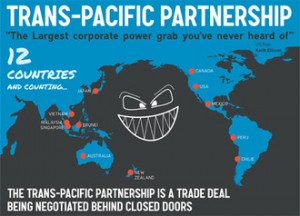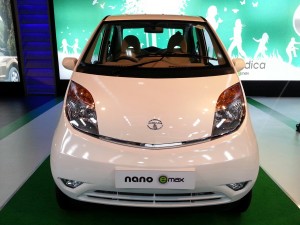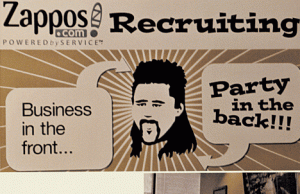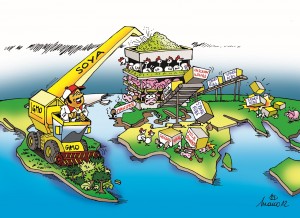Today, I attended a talk about inequality between Dean Robert Helsley and Joseph Stiglitz, who received the Nobel Memorial Prize in Economic Sciences. It was a highly intriguing talk about the causes and solutions for inequalities in income, wealth, health etc. However, what truly enlightened me was his take on the TPP.
He surmised that the TPP is a just “a bad trade agreement”, given that it is a “managed trade agreement for large companies in the US”. He elaborated on a couple of different points to back up his claim
1.Drugs.
In pharmaceuticals, it is a battle between the Generics and the Big Pharmas. The TPP is essentially a trade agreement that was crafted without the Generics at the table, and hence is aimed at gains for the big Pharmas at the expense of generics. Essentially – making drugs more expensive and less accessible.
2.Managed for the special business interest
The agreement was made with regards to different business interests and based on rules of origin. Japanese cars are duty free. However, the definition of a Japanese car is slightly ambiguous – whether they have to be manufactured in Japan, or simply sold by a Japanese Auto Manufacturing Company is not 100% clear. So it is that Chinese cars can enter the States free of any tariffs. That would be absolutely devastating to the local industry. However, tariffs on American Agriculture will drop, most of them to 0. It is clear that American agriculture will be a big winner from the TPP. However, the effects of that on other countries local agricultural industries are unfathomable given that the US government subsidizes a lot of the agriculture.
From what his expertise and reasoning told me, the TPP is by no means a trade agreement countries should sign – and definitely not the United States. Dr. Stiglitz said that part of the culture in many American treaties, is to “always call an agreement the opposite of what it is”. So if it is called a partnership – then its more of a domination.



 Companies such as Chrysler, Ford and GM become less competitive compared with other Auto manufacturers who are new to the United States or are based elsewhere in countries that provide national healthcare, and hence do not have to incur such a cost. General Motors Corp., for example, spent
Companies such as Chrysler, Ford and GM become less competitive compared with other Auto manufacturers who are new to the United States or are based elsewhere in countries that provide national healthcare, and hence do not have to incur such a cost. General Motors Corp., for example, spent 


